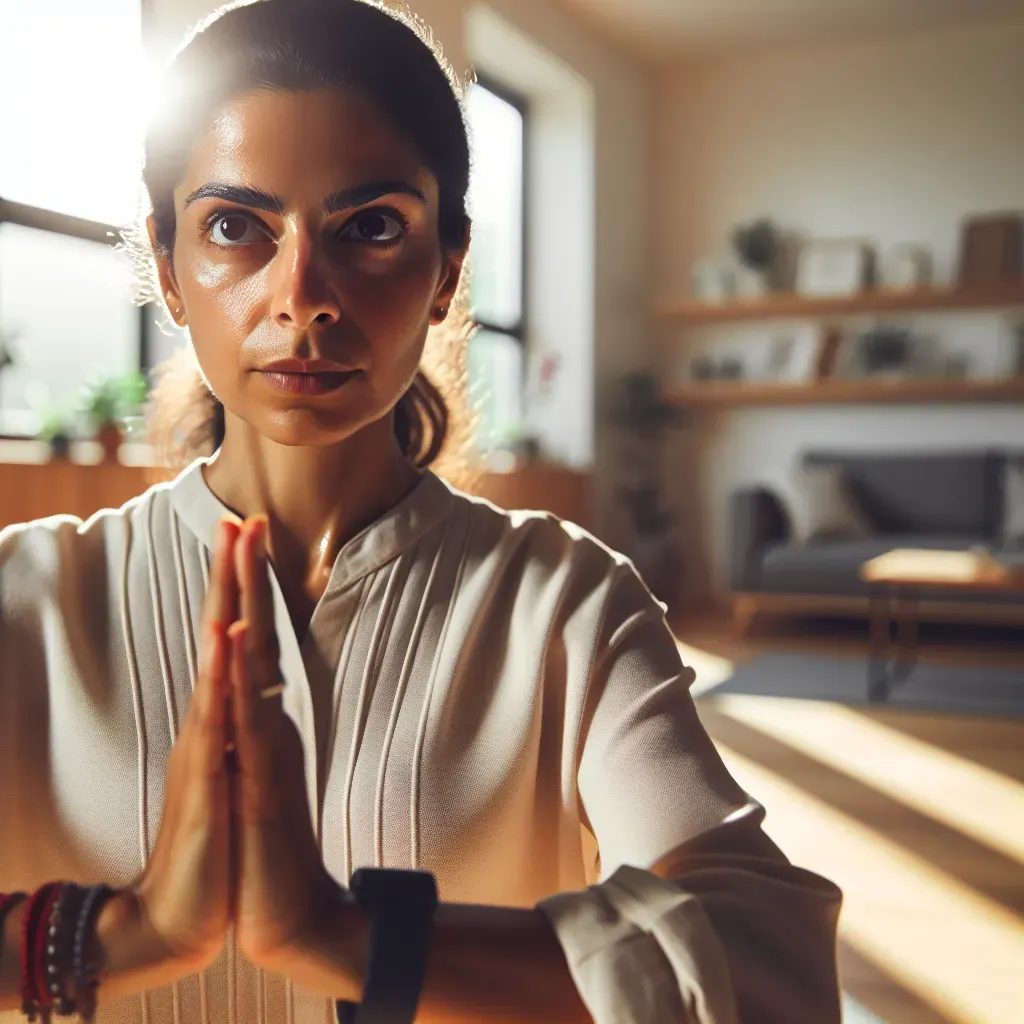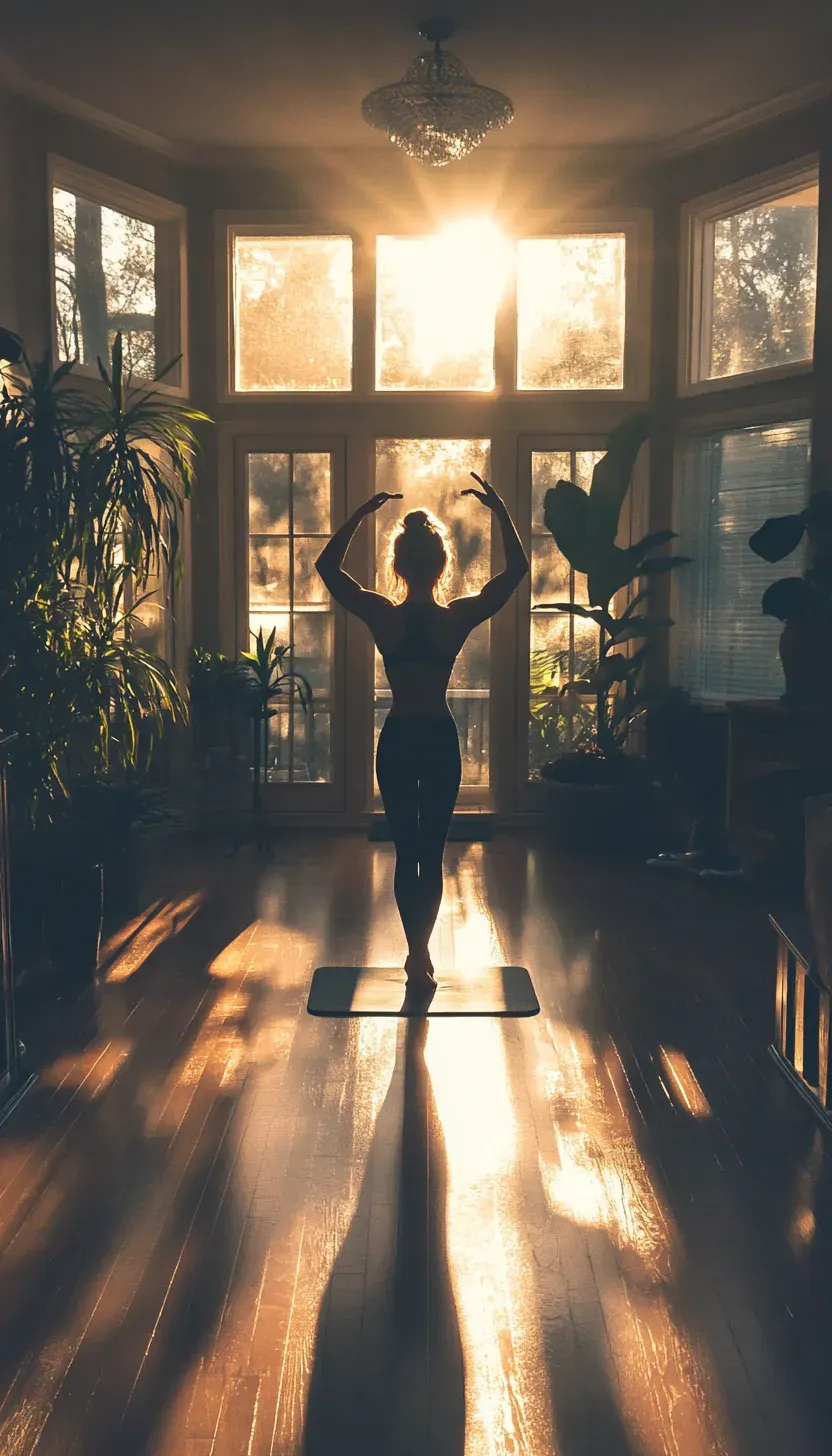Unlock Your Spine: The Healing Powers Of Backbend Yoga Poses
Table of Contents
- Embrace the Power of Backbends
- What are the Spiritual Benefits of Backbends?
- What are the Benefits of Backbends in Yoga?
- Why is Back Bending Good for the Spine?
- Understanding Spinal Anatomy and Health Benefits
- Popular Backbend Yoga Poses Explained
- Camel Pose (Ustrasana)
- Wheel Pose (Chakrasana)
- Cobra Pose (Bhujangasana)
- How Backbends Release Physical Tension
- Emotional and Mental Benefits of Backbends
- Safety Tips for Practicing Backbends
- Incorporating Backbends into Your Routine
- Transform Your Life with Backbend Yoga
Embrace The Power Of Backbends
Backbends possess a unique ability to open up physical and emotional landscapes, inviting us to explore the depths of our potential. As we arch our bodies backwards, we not only stretch our spines but also release stagnant energy that may have been held within us for far too long.
Each backbend serves as an invitation to surrender and reconnect with ourselves, creating space for renewal and growth. Imagine the thrill of unfolding your heart centre while simultaneously grounding your body this harmonious balance can transform both your practice and daily life.
The profound impact of backbends extends beyond flexibility; they stimulate vital organs, invigorate the nervous system, and promote vitality. When practised mindfully, these poses awaken dormant sensations while fostering self-acceptance and resilience against challenges. In a world brimming with stressors that often curl us inwards, backbends encourage vulnerability by prompting us to face life head-on with courage.
They challenge our limits, urging us to embrace discomfort as a pathway to strength—a powerful metaphor replicated both on and off the mat. So let’s dive deeper into this transformative journey together; it's time to unlock the treasures hidden in every curve of your spine!
What Are The Spiritual Benefits Of Backbends?
Backbends have long been celebrated not only for their physical benefits but also for their profound spiritual impact. When we open our hearts and spines, we create a powerful channel for energy flow, allowing the release of stagnant emotions and limiting beliefs that often reside in the body.
This liberation fosters a deeper connection to our authentic selves, inviting vulnerability and courage as we embrace life's challenges with an expanded perspective.
In many traditions, backbends symbolize surrender and acceptance—an offering of ourselves to the universe. As we arch backwards, there’s a subtle invitation to let go of control and trust in the process of life.
This act can cultivate resilience, aiding practitioners in navigating difficult moments with grace. The heart-opening nature of these poses allows us to connect deeply with compassion: for ourselves, others, and even the world around us.
Moreover, backbends can enhance our meditation practice by aligning physical posture with spiritual intent. By integrating breathwork with these poses, practitioners can delve into a state of mindfulness that encourages clarity and insight.
As you surrender into each stretch, you may find not just flexibility within your body but also emotional insights waiting beneath the surface a gentle reminder that true healing encompasses both body and soul.
What Are The Benefits Of Backbends In Yoga?
Backbends in yoga offer a myriad of benefits that extend far beyond mere physical flexibility. One of their most profound effects lies in their ability to stimulate the heart chakra, promoting emotional release and helping to alleviate feelings of fear and anxiety.
Engaging in these poses encourages the flow of prana, or life force energy, through the body, creating an invigorating sense of openness and vitality. This can lead to improved mood and increased resilience against stressors.
Moreover, backbends cultivate a deep sense of grounding within practitioners. As the chest opens and shoulders draw back, we not only counteract the slumped posture that often arises from prolonged sitting but also foster an empowering stance physically and metaphorically.
This reclaiming of space boosts confidence levels while enhancing overall body awareness. Integrating backbends into your routine serves as both a physical challenge and an opportunity for personal growth, inviting you to embrace vulnerability while cultivating strength inside and out.
Why Is Back Bending Good For The Spine?
Back bending poses are not just visually impressive; they are a vital practice for spinal health. As we navigate our daily routines often hunched over screens or confined to chairs our spines can develop stiffness and tension.
Engaging in backbends counteracts this habitual flexion, promoting extension and encouraging the spine to regain its natural curvature. This extension isn’t merely about flexibility; it invigorates the intervertebral discs, enhancing their hydration and overall function, which is crucial for spinal support.
Furthermore, these poses stimulate the nervous system by increasing blood flow to the region of the spine, delivering essential nutrients that may help mitigate pain and discomfort.
The heart-opening nature of backbends also enhances lung capacity and improves breathing patterns a deeper breath aids in oxygenating your body fully while relieving built-up stress.
By infusing movement into our often-static lifestyles through mindful engagement with back bends, we create space not only physically within our bodies but also emotionally within ourselves, allowing for greater resilience against daily strains both mental and physical.
Understanding Spinal Anatomy And Health Benefits
Understanding spinal anatomy is crucial for appreciating the transformative effects of backbend yoga poses. The spine, often described as the body’s central pillar, comprises 33 vertebrae that house and protect the delicate spinal cord while supporting our posture and movement.
Each segment from the cervical to lumbar region plays a distinct role in enabling flexibility and strength. When engaged properly in backbends, these vertebrae create space between discs, enhancing fluidity in movement and reducing tension or discomfort that often accumulates from daily stressors.
Backbends not only invigorate physical alignment but also provide significant mental health benefits by fostering a sense of openness. As we stretch through these poses, there is a powerful interplay between effort and release; this encourages deep breathing, which in turn stimulates the parasympathetic nervous system, promoting relaxation and reducing anxiety levels.
Furthermore, opening up the front body during backbends exposes areas tied to emotional storage offering an unexpected path toward emotional healing. By consciously engaging with your spinal health through these dynamic movements, you cultivate resilience both within your body and mind, unlocking potential you may not have realized existed.
Popular Backbend Yoga Poses Explained
Backbend yoga poses not only enhance flexibility and strength but also promote emotional release, offering profound benefits for both the body and mind. One of the most popular backbends is Camel Pose (Ustrasana). With knees grounded and hips aligned, this pose opens the heart, allowing practitioners to confront feelings often buried within.
Engaging in Camel Pose can evoke a sense of vulnerability, inviting deeper self-acceptance and nurturing emotional resilience a reminder that true strength lies in embracing our authentic selves.
Another celebrated backbend is Wheel Pose (Chakrasana), which demands both upper body strength and core stability. As you lift your chest towards the sky while pressing through your hands and feet, you create a powerful bridge between physical exertion and spiritual elevation.
This pose invigorates energy flow throughout the spine, promoting better circulation while providing an exhilarating rush akin to soaring through open air an embodiment of liberation as you push beyond physical limitations.
Lastly, Cobra Pose (Bhujangasana) is accessible yet profoundly transformative; it's an invitation to restore balance gently. By arching your back while keeping your pelvis grounded, Cobra integrates breath with movement a perfect practice for mindfulness amidst life's chaos.
The expansion in the chest enhances lung capacity, aiding relaxation while simultaneously boosting alertness an ideal combination for those seeking clarity and calm in their daily routines. Each backbend enriches not just physical alignment but connects us more deeply with our inner landscape the rich tapestry of emotions we hold within us all.
How Backbends Release Physical Tension
Backbends are not merely physical movements; they serve as powerful catalysts for releasing deep-seated physical tension stored in the body. As we arch and open our hearts, we stimulate various muscle groups, particularly in the back, shoulders, and chest.
This engagement is crucial because many of us carry stress in areas like the upper back and neck due to poor posture or emotional strain. By fostering a gentle expansion of these regions, backbends encourage blood flow and alleviate tightness that can manifest as discomfort or pain.
Moreover, backbends also orchestrate a delicate dance between muscle activation and relaxation. The counterintuitive nature of extending backwards while balancing on our limbs fosters mindfulness a present-state awareness that often reveals hidden tensions we'd otherwise overlook.
Each pose invites us to breathe deeply into these spaces of tension; with each exhale, a sense of release washes over us effectively old burdens fading away like waves receding from the shore.
As one embraces this revitalizing practice, it becomes clear: backbends transcend flexibility improvement; they are holistic expressions of freedom for both body and mind.
Emotional And Mental Benefits Of Backbends
Backbends serve as a powerful catalyst for emotional release and mental clarity, promoting a profound sense of well-being. The act of opening the chest and heart in poses like Cobra or Camel encourages vulnerability, allowing buried emotions to surface.
This cathartic release can lead to unexpected feelings of joy, empowerment, or even tears each a step towards emotional healing. As we expand our physical form, we simultaneously create space for emotional growth, challenging negative thought patterns that often hinder our progress in life.
Moreover, the unfurling nature of backbends stimulates the solar plexus chakra, linked to self-identity and confidence. Through regular practice, individuals often report enhanced self-esteem and an increased ability to confront life's challenges.
Breathing deeply into these poses not only boosts oxygen flow but also cultivates mindfulness a direct counterbalance to anxiety and stress. Embracing backbends is more than just a physical exercise; it's an invitation to reshape how we view ourselves and navigate the world with a lighter heart and mind.
By regularly incorporating these poses into your routine, you initiate a journey toward holistic balance that resonates long after you leave your mat.
Safety Tips For Practicing Backbends
When practicing backbends, safety should always be your top priority to unlock their full potential without injury. Start with a gentle warm-up that focuses on opening the hips and shoulders; this will create a stable foundation for your spine and help to prevent strain. Incorporating poses like Child’s Pose or Cat-Cow can prepare your body for deeper backbends by enhancing flexibility and awareness in these key areas.
As you transition into deeper poses, always listen to your body. It’s essential to recognize when you’re approaching your limits; turning inward helps cultivate a mind-body connection that is invaluable during practice.
Use props such as blocks or straps to assist you, particularly if you're new to back bending these tools allow you yet another layer of support while maintaining alignment.
Remember that maintaining an even breath is crucial: it not only stabilizes the pose but also aids in reducing anxiety and tension in the body, allowing for a more meditative experience.
Incorporating Backbends Into Your Routine
Backbends can feel intimidating, but incorporating them into your routine opens up a world of flexibility and strength. These poses not only stretch the front body but also promote spinal mobility, which is crucial for maintaining overall health.
Imagine each backbend as a gentle opening; it’s an invitation to release tension that may have accumulated from long hours of sitting or poor posture.
As you begin to weave backbends into your yoga practice, consider starting with gentler variations like Camel Pose or Sphinx Pose before advancing to deeper stretches such as Wheel Pose.
This gradual approach helps you attune to how your body responds, allowing you to build confidence and discover your limits while safeguarding against injury. Balancing backbends with forward folds can create equilibrium in the spine, helping you cultivate both strength and relaxation.
Furthermore, think about integrating breathwork during these poses inhale deeply as you lift into the arch and exhale slowly as you ease out of it. This synchronization enhances awareness and deepens the experience, transforming each session from mere physical exercise into a holistic practice that nurtures both body and mind.
By welcoming backbends into your life, you're not just unlocking stiffness; you're inviting vitality, openness, and a renewed sense of empowerment within yourself.
Transform Your Life With Backbend Yoga
Embracing backbend yoga can serve as a powerful catalyst for transformation both physically and mentally. These poses invite you to open your chest and shoulders, allowing not only for improved posture but also enhanced respiratory capacity, which is essential for overall vitality.
As you deepen into each backbend, you may find emotional barriers being released backbends have an uncanny ability to uplift the spirit, leaving many practitioners feeling rejuvenated and more connected to their inner selves.
Moreover, backbend yoga encourages a sense of vulnerability and strength simultaneously. By courageously exposing your front body while grounding through your legs, you're training your mind to balance openness with stability a life lesson that transcends the mat.
With dedication and consistency, these transformative practices can lead to greater resilience in facing life's challenges, igniting a profound sense of empowerment that ripples into all aspects of daily living. Dare to step onto the mat; your journey toward empowerment awaits in the embrace of backbends.
People Also Asked
What is the best way to warm up for backbends?
- A gentle warm-up focusing on hip and shoulder opening is ideal. Consider poses like Child’s Pose or Cat-Cow to prepare your body.
Can beginners practice backbends safely?
- Yes, beginners can practice backbends safely by starting with gentle poses and using props for support.
How often should I practice backbends?
- Practicing backbends 2-3 times a week can be beneficial. Listen to your body and avoid overdoing it.
What are some common mistakes in backbends?
- Common mistakes include not warming up properly, pushing too hard, and neglecting alignment. Always prioritize safety.
How do backbends help with emotional release?
- Backbends open the chest and heart, allowing for the release of stored emotions and promoting emotional healing.
Can backbends help with anxiety?
- Yes, backbends stimulate the parasympathetic nervous system, promoting relaxation and reducing anxiety.
Are backbends good for spinal health?
- Yes, backbends promote spinal extension, enhancing flexibility and reducing tension, which is beneficial for spinal health.
What props can assist in backbend practice?
- Props like yoga blocks, straps, and bolsters can assist in maintaining alignment and providing support during backbends.
How do I balance backbends with other yoga poses?
- Balance backbends with forward folds and twists to create equilibrium in your practice and prevent overextension.
What should I do if I feel pain during backbends?
- If you feel pain, ease out of the pose and rest. Consult with a yoga instructor to ensure proper alignment and technique.





